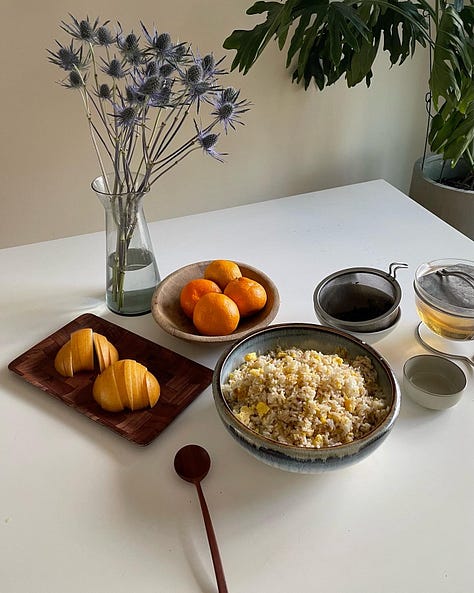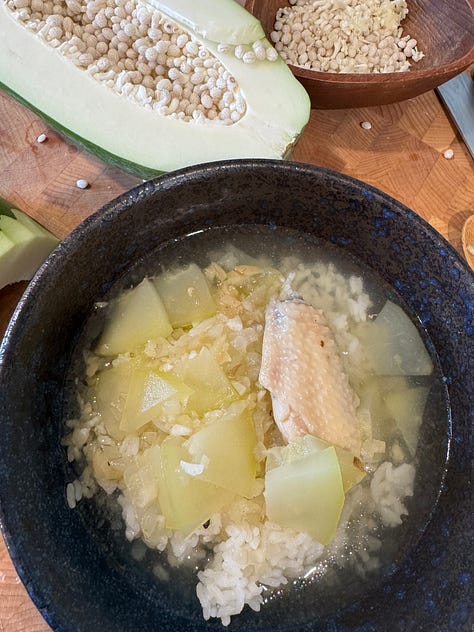Fish Sauce: Never Too Much
Fish sauce, the sauce we’ve been told is too unbearable to smell, carries a legacy of Austronesian seafaring culture.
The problem is we don’t hear enough about the rich tradition of fermented fish in Southeast Asia, and we hear too much about it being too much. My exposure to fish sauce didn’t really happen until my mid-1990s middle school and high school friendships were formed in Mira Mesa, San Diego. I was lucky to make friends whose families arrived in the States as refugees, not immigrants. Despite also having lineage from Southeast Asia, there was a much different approach to how tightly they held onto their culture. They took up space with how they spoke their language. They flavored their food using fish sauce. They were unapologetic about who they were and where they come from.
This was not happening at my house. Filipino food was reserved for when we visited our relatives and social gatherings.
I recently came across a video interview with Ocean Vuong, Vietnamese American poet, essayist and photographer about his new book, The Emperor of Gladness. In the video, Vuong was asked about critics calling him too earnest. His defense was to talk about how he was raised and who he was raised around—black and brown communities who took a lot of pride in what they wore, and how too often what they wore was considered too much. He said his intent was actually to be too earnest. He had assimilated in the past and refused to assimilate again.
That statement resonated deeply with me. For those of us who were raised in interracial families and choose interracial relationships, food becomes a way we show up with our ethnicity. When we assimilate, through our choices and relationships, we oftentimes feel more disconnected and like we are hiding a part of who we are.
Fish Sauce: Never Too Much
The solution to all of this is to cook regularly with fish sauce. Fill up your space with the aroma of fish sauce. Allow ourselves and our loved ones to taste our heritage.
Below I’m sharing three recipes that require fish sauce and will create versatility in what you can cook.



Japanese Fried Rice
Although Japan isn’t considered Austronesian, Japanese culture has played a large role in other Pacific Islander cultures, especially Hawai’i. Because this version of fried rice is so delicate and simple, the fish sauce becomes a significant part of how satisfying it tastes. This fried rice is exceptional when eaten with salmon roe and seaweed.
Ingredients:
3 tablespoons of vegetable oil
4 cups of cooked Japanese short grain rice, left overnight in the fridge
1/2 cup of sliced and chopped leeks, just the white part
5 eggs
1 tablespoon of fish sauce
1 tablespoon of soy sauce
1 tablespoon of sake
Salt to taste
Heat a wok and add one tablespoon of vegetable oil.
Stir the eggs and pour into the wok allowing the eggs to cover the entirety of the wok as much as possible.
Once cooked remove the eggs.
Add the remaining oil to the wok.
Stir-fry the leeks for one to two minutes until aromatic and translucent.
Break up the rice with your hands and add to the wok.
Using a heavy duty wok spatula, break up the rice into smaller clumps.
Return the eggs to the wok. Add the fish sauce, soy sauce, sake and stir fry until the rice and eggs look well-coated.
Chicken Tinola
A simple chicken broth flavors green papaya in this indigenous Filipino recipe. Known as a comfort food, Chicken Tinola also made its way to Hawai’i, where papaya is abundant. The malunggay (horseradish) leaves are said to help aid in milk lactation for mothers who’ve just given birth.
2 tablespoons of vegetable oil
Salt
Pepper
1 thumb of ginger, peeled and minced
3 cloves of garlic, crushed and minced
3 pounds of chicken wings
Green papaya–small in size, peeled, seeded and sliced into half inch thick pieces
1/2 cup of Malunggay leaves
2 tablespoons of patis (fish sauce) for flavor
Season chicken with salt and pepper.
In a large pot, add ginger, garlic and onion and sauté until softened.
Add chicken to the pot and lightly brown for a couple of minutes.
Turn chicken over and lightly brown. Add several cups of water to the pot, making allowance for the papaya to be added later.
Bring water to a boil and then turn down heat to let simmer for one hour.
Add papaya and let cook until soft. Add the malunggay leaves. Taste for flavor. Add patis to your liking or individually.
Larb (pronounced Laap)
Larb is a Thai salad full of texture and Southeast Asian flavor that is also found in Laotian cuisine. The fish sauce becomes the base of the dressing and is beautifully balanced with the acid of lime juice.
1 1/2 tablespoons of jasmine rice
2 tablespoons of water
9 oz ground chicken
3 tablespoons of finely sliced shallots
2 tablespoons of cilantro, chopped
1 small green onion, chopped
2 tablespoons of fish sauce
2 tablespoons of lime juice
1 teaspoon of chili flakes
1/4 cup mint leaves, torn
Start by making the toasted rice powder. Place the raw rice in a dry pan and cook over medium heat. Rotate the pan constantly until the rice appears between golden and dark brown. Ground the rice in a mortar and pestle to make the coarse powder.
Add two tablespoons of water to a medium pot over high heat and then add the ground chicken. Stir until the chicken is cooked through and then remove it from the heat.
Add the cooked ground chicken to a mixing bowl and start adding the flavor. Begin with stirring in the shallots. Add the fish sauce, lime juice, toasted rice powder, chili flakes, cilantro, and green onion and mix thoroughly. Garnish with fresh mint.
Serve with fresh lettuce leaves, cucumber and sticky rice.




